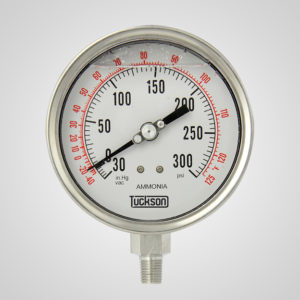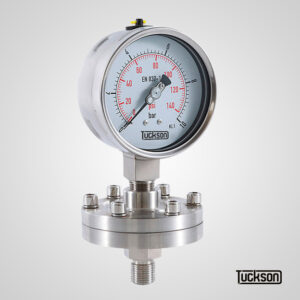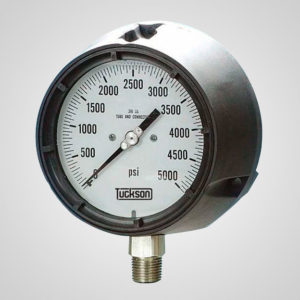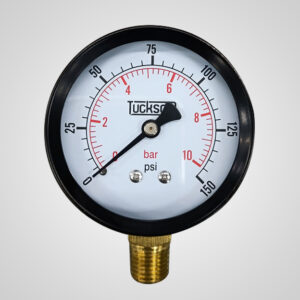Description
Use No Oil Pressure Gauge
Applications
Use No Oil Pressure Gauge is designed and manufactured for oil free service indicating cylinder pressure of compressed non-corrosive gases or any medium which oxidizes with oil based materials, in applications such as welding, cutting and related processes.
Standard Features
Sizes
1.5″, 2″, 2.5″ (40, 50, 63 mm)
Accuracy
3-2-3% of full scale ANSI/ASME Grade B
Case material
Brass or Steel black painted
Window
Acrylic
Bourdon tube / movement / socket
Brass
Operating Temperature
Ambient: -20 to 60°C (-4°F to 140°F)
Process fluid
max 60°C (140°F)
Dial
Aluminum with black & red markings on with background
Pointer
Black aluminum
Connection
1/8″, 1/4″ NPT, BSP or BSPT, bottom and back
Ranges
Vacuum / Compound to 100psi
Pressure from 15psi to 5000psi (or equivalent other units)
Working pressure
75% of full scale
Protection Degree
IP52
Oil Free
Installation tips
Pressure gauges mounted directly on piping should be assembled with reasonable care, always using the wrench grip provided on the pressure connection to secure it to the threaded fitting.
Do not use the gauge case as a means of tightening the connection.
In order to extend the service life and continued accuracy, the gauge should be protected as far as possible from effects of mechanical vibration. It is desirable to isolate it from severely vibrating machinery.
The gauge may be rigidly mounted to a non-vibrating surface and connected to the pressure source using flexible tubing.
Tip: we recommend the use of Gauge Cock Valves
Follow us on Pinterest





